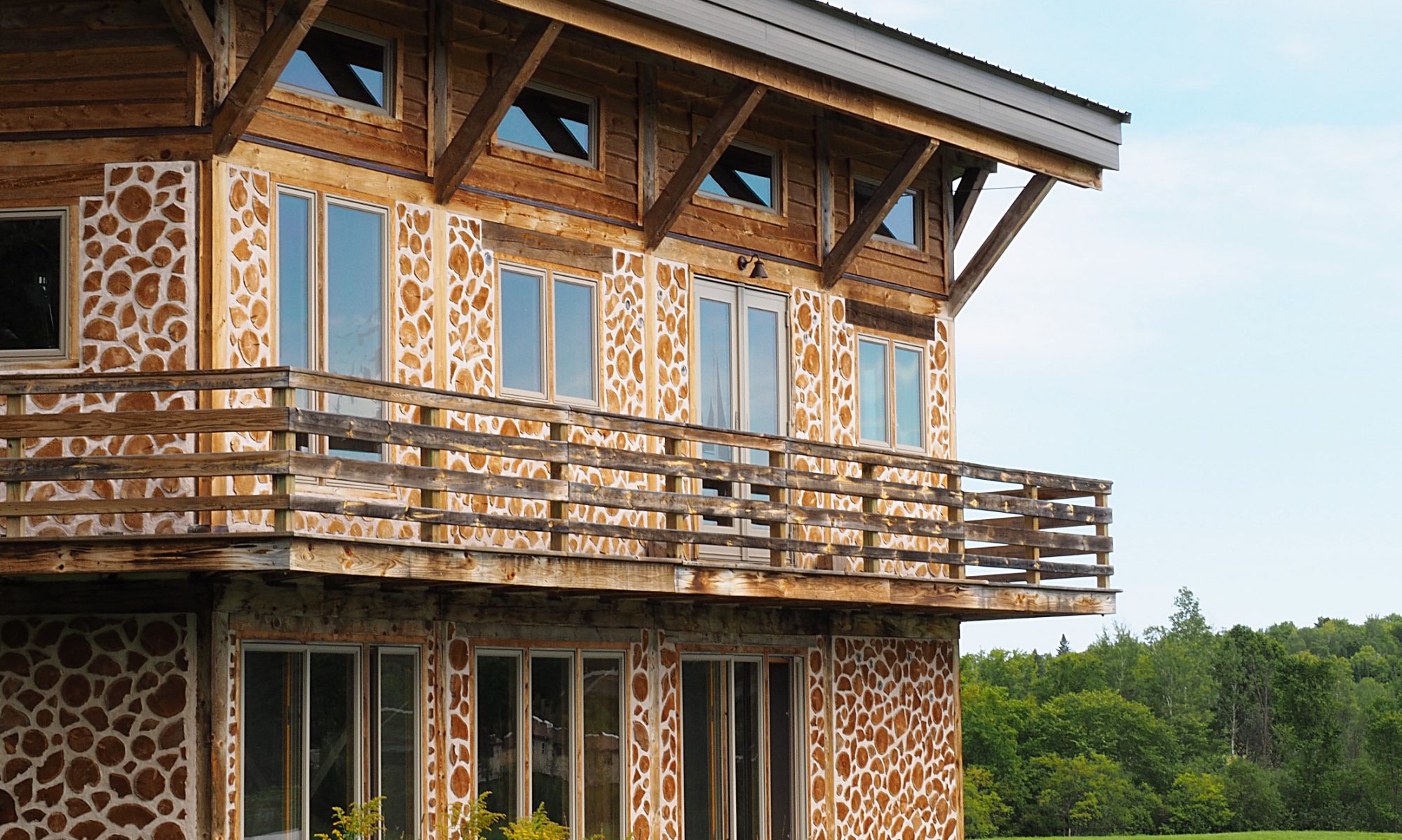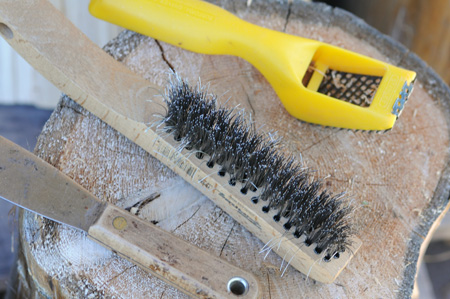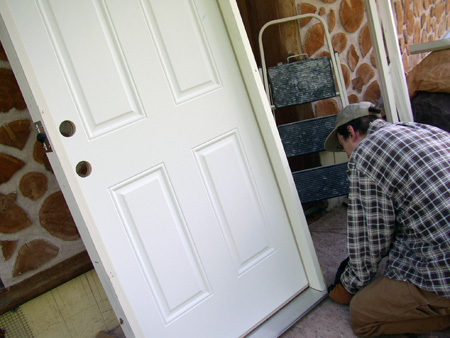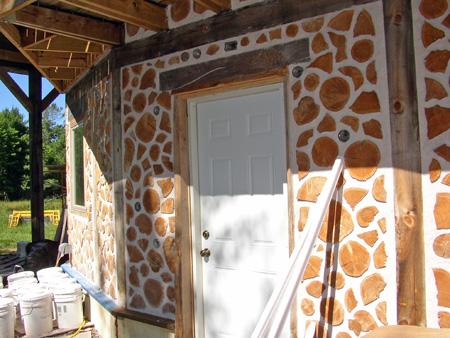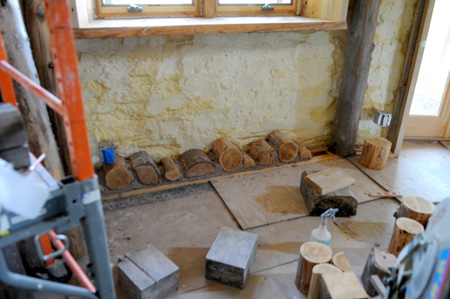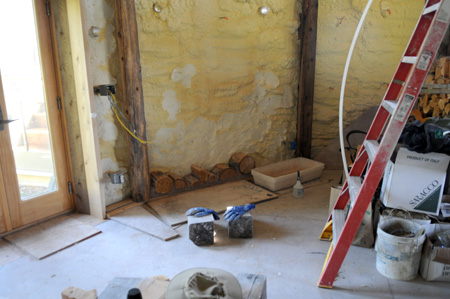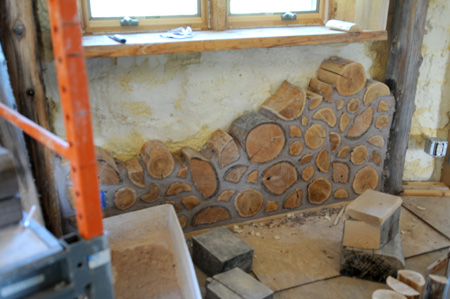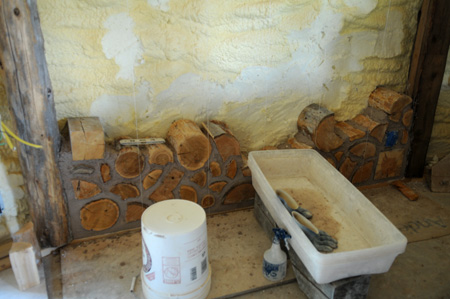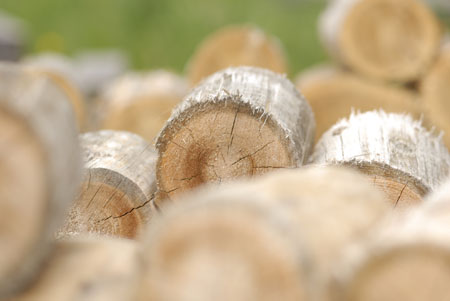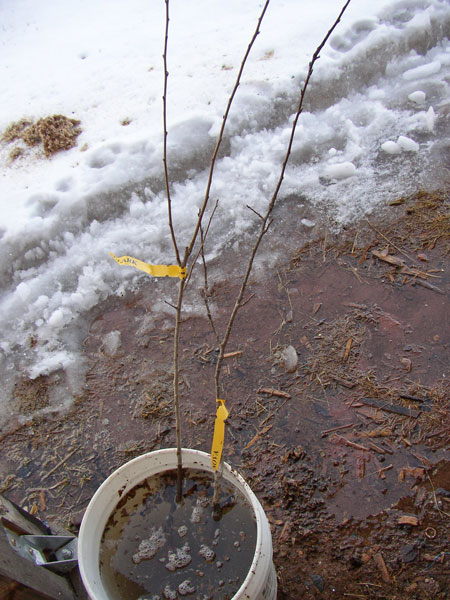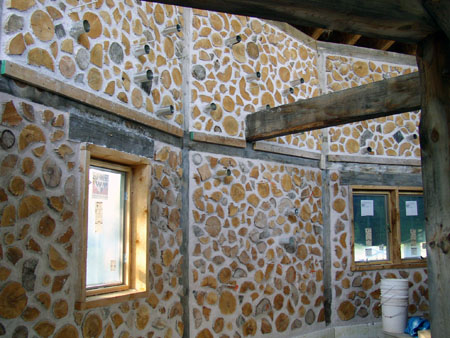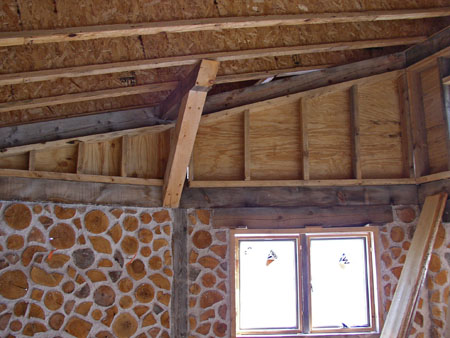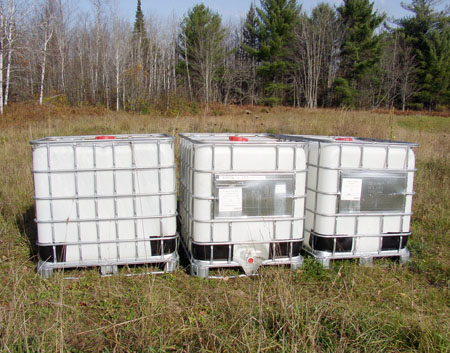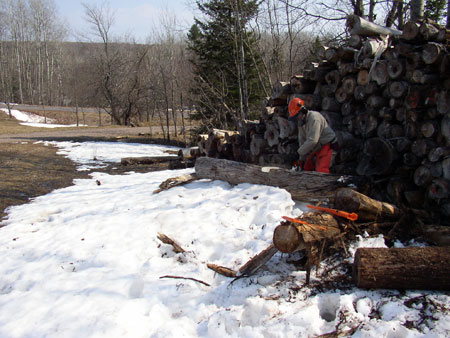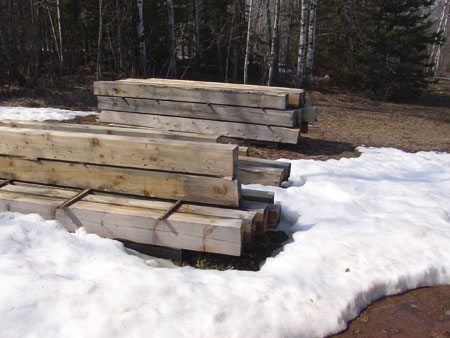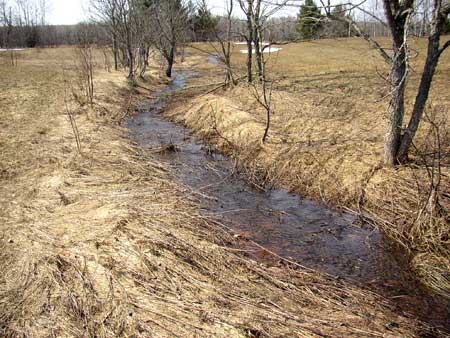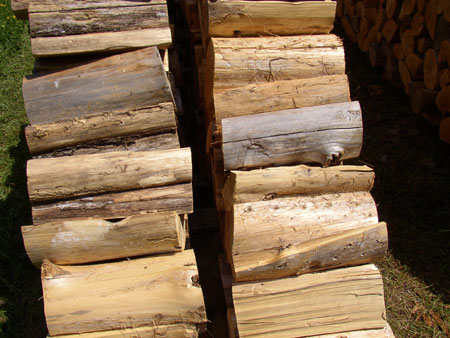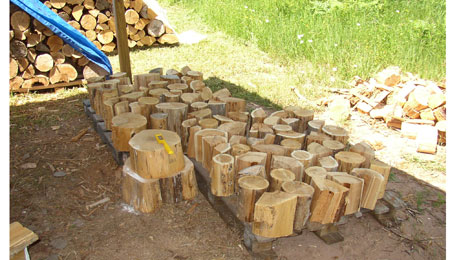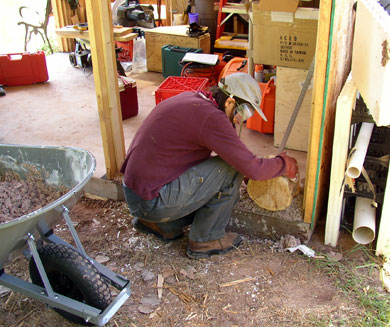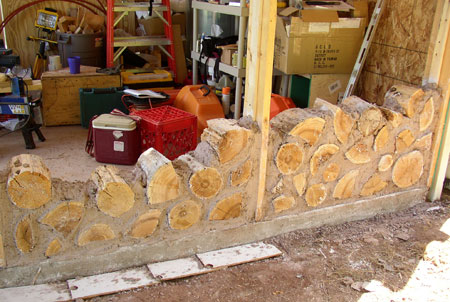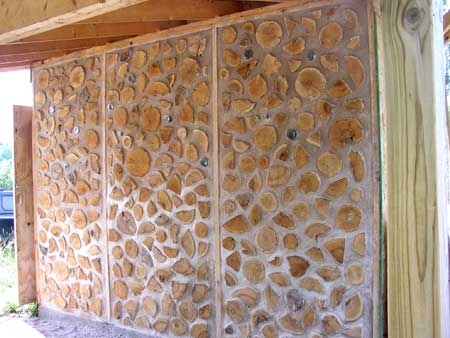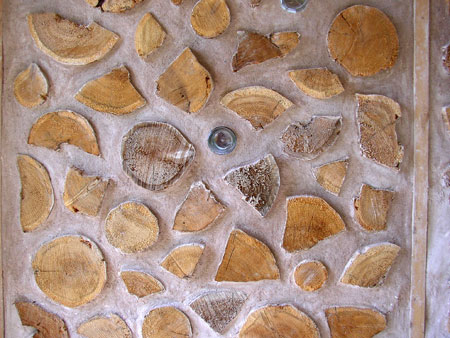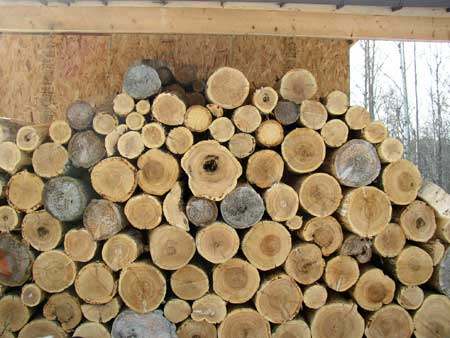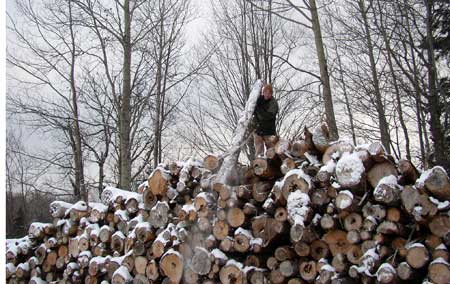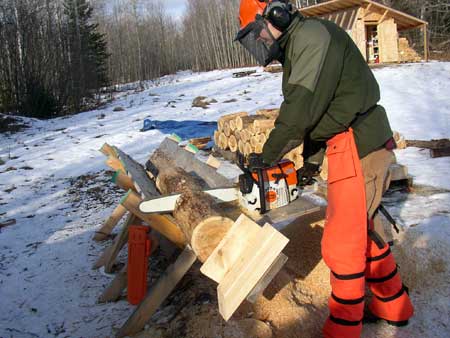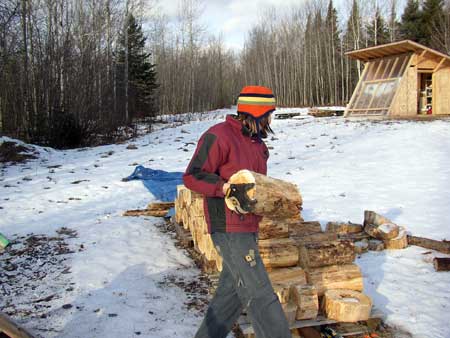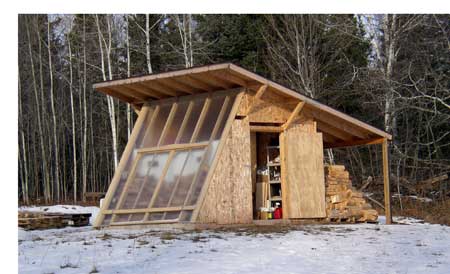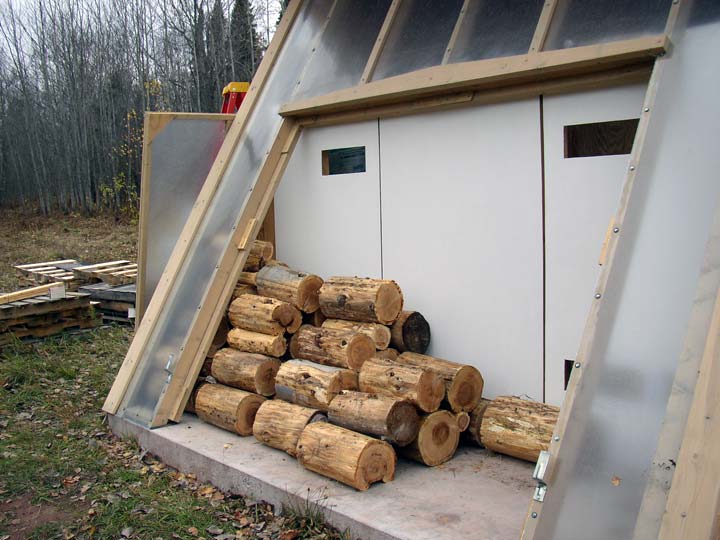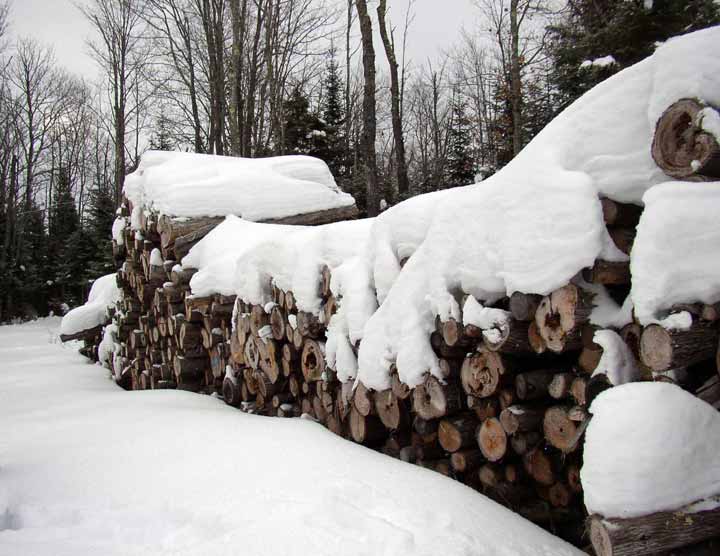Note – We’re way behind updating the Nerdwood site, so even though these next few posts are being written in October, the dates on them reflect when we actually did the work.
So, the “few details” we had to wrap up before cordwooding – the ones that would only take a week or so? Pretty much exactly a month. Building a cordwood house (or probably any house if you do it yourself, are not a builder, and are trying for a decent level of workmanship) is much like flying into the event horizon of a black hole – everything sloooooooooows down.
One of the first tasks was to treat the timber frame with a preservative. Since the timbers are untreated pine, spruce and hemlock, and since they are exposed to the elements to varying degrees, we sprayed them with a log home preservative containing boric acid, which protects against both wood-loving insects such as pine-bark beetles, carpenter ants and termites (although we’re too far north for termites), and against fungus and mold. Although you can use a solution mixed up from 20-mule team borax, we spent a few more bucks to use a glycol-based solution, which penetrates much further into the wood and stays there. The only portions we’ll have to re-treat are those that get rained on directly. The cordwood walls use cedar logs, which are naturally pest- and decay-resistant, and are protected under wide overhangs, so we won’t need to treat those at all.
Next up was a drip cap. The cordwood walls are being built atop an eighteen inch high concrete wall (probably faced in stone) to keep them dry, so we needed something to interface between the cordwood portion of the wall and the kneewall. We cut pieces of synthetic decking, attached it to the kneewall with concrete screws, and wrapped it in copper flashing, whichwill develop a nice patina after a few years, and should last pretty much forever.The rear third will be mortared directly into the wall with the rest sticking out.Here’s how it looks so far:

Finally, we needed to cut and prep some logs:
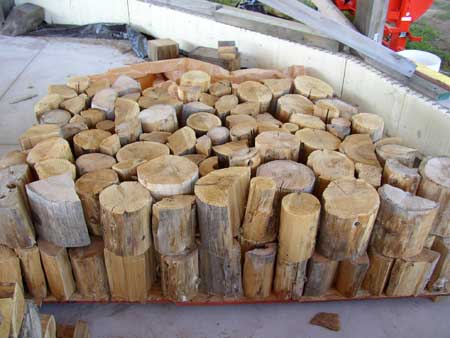
“But Greg,” says Clare, “We’re going to need a lot of logs.”Okay,
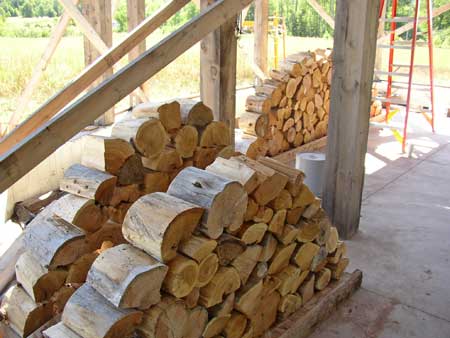
“No, I mean a lot of logs!”Hmmmm…
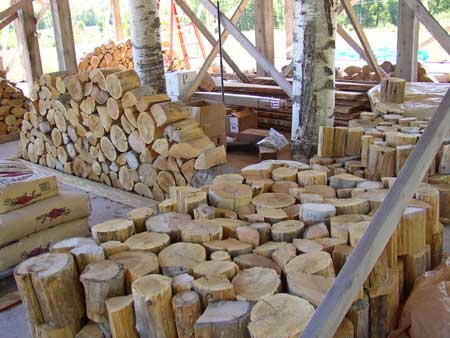
Now we’re getting somewhere!
